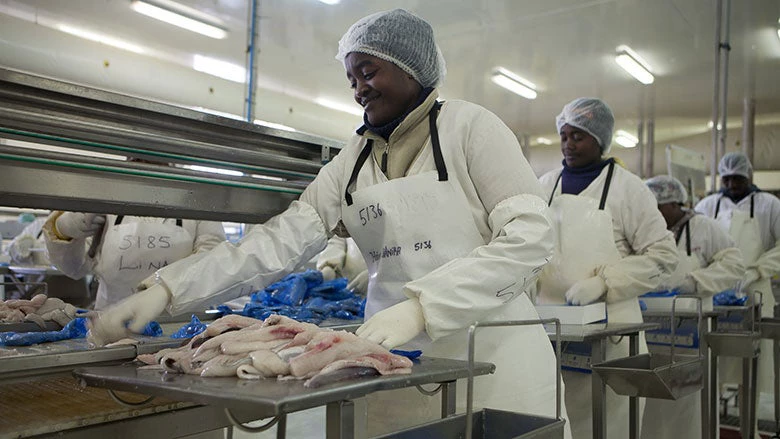Is the era of industrialization and manufacturing exports growth miracles – a period of rapid economic growth exceeding expectations, last seen in East Asian countries, most notably in China – over? If you listen to Harvard’s Dani Rodrik, the answer seems to be: pretty much! Does that mean, Africa, the only continent which hasn’t seen rapid export-led manufacturing growth, would not have many growth miracle stories?
There have been a handful of small African countries that have seen high, sustained growth in the post-World War II period. For example, Botswana, a success story of sustained, high growth from 1965-2005, grew before the discovery of diamonds and continued after it. Starting from a low-income, agriculture based economy in 1968, Mauritius grew at a healthy per capita rate of over 4% from 1971 to 1991 and has now become a well-diversified, upper-middle-income economy. More generally, growth rates in Sub-Saharan Africa rose remarkably starting in the mid-1990s before coming down as the commodity super-cycle ended in 2008. This high growth period in Africa is characterized mostly by accumulation of factors of production, particularly public spending on physical capital. The share of agriculture in gross domestic product (GDP) has been declining across the continent, but so is that of manufacturing. Unlike the more common structural transformation process, where labor typically leaves low productivity agriculture and enters high productivity manufacturing, much of the labor movement across the continent has been from agriculture to informal, low productivity urban services.
Last summer Professor Rodrik gave a talk at the World Bank on industrialization, structural transformation and growth. His thesis is that while growth miracles have almost always been driven by labor intensive, manufacturing-led export (like that of South Korea, China and Vietnam), such a repeat is unlikely in the new global economy. This is due to many reasons including technological changes and a lack of trade protection opportunities. For resource-rich economies, Rodrik’s observation is that the pattern of growth is highly capital intensive, which employs little labor. Very few of such economies have grown successfully at high, sustained rates.
Based on the recent growth performance (and its composition) of low-income economies, Rodrik’s conjecture seems persuasive, that is, manufacturing-led-labor-intensive growth may be a thing of the past for an economic miracle. Moreover, with automation and robotics technology, many manufacturing areas are increasingly becoming skill-intensive. Additive manufacturing or 3D printing may be the future path which requires high skills and trained workers. It is more skill-intensive than the information technology (IT) enabled services that provided a growth spurt to countries like India; and like IT services, they do not absorb a lot of labor.
If successful engagement in modern manufacturing industries appears to be a difficult option for most low-income countries, how else can they grow faster? One area that seems to be a viable solution and a good starting point is increased agriculture productivity. Agriculture remains the main source of livelihood in most of the low-income countries, employing a large amount of formal and informal workforce. Improving agricultural outcomes for rural income generation is also at the core of poverty alleviation. Next, diversification within agriculture towards greater value-added agricultural products for potential exports and/or domestic sale would also be growth enhancing.
Raising agricultural productivity is indeed a major focus of development in Sub-Saharan countries. Expansion of agricultural extension services and adoption of modern, high-quality agricultural inputs with reliance on the private sector for delivery, has been the new model of agriculture production. Moving up the value chain and expanding agri-business is a growth escalator and has also been a major development initiative in many sub-Saharan countries. Development of the cassava value chain in several countries (Nigeria, Ghana, Tanzania, among others) is a notable example of efforts to industrialize agriculture in Africa.
Moreover, there are cases which illustrate that countries can grow successfully absent modern manufacturing. Among Sub-Saharan African countries, Ethiopia’s growth experience has been the most remarkable in recent years with real per capita growth averaging over 6% per year between 2000 to 2015. The growth process is characterized by heavy investment in public infrastructure which led to a significant increase in labor productivity within sectors. There is also some evidence of structural change: with farm labor moving away from agriculture to relatively higher productivity construction and services activities in urban areas.
Only time will tell whether low-income economies in Sub-Saharan Africa will experience high and sustained growth that benefits populace at large. Improving agriculture with higher yields and intra-sectoral diversification into higher value-added food is a promising path for higher growth in the short- to medium-run. Achieving success on this front while aiming for inter-sectoral productivity gains through diversification (in higher productivity industrial and service activities) would be a cohesive growth strategy. With the ongoing structural economic shift in China, light manufacturing holds promise for countries such as Ethiopia, Tanzania and Zambia. At the same time, low-income countries need to diligently improve their economies by acquiring the fundamentals of broad-based sustainable growth (e.g., enhanced human capital, improved institutions) surely, even if slowly. With enhanced human capital accumulation, they could take advantage of new technologies that might be available say through digital dividends or artificial intelligence. The important thing is to not miss the next opportunity when it comes knocking at the door.



Join the Conversation